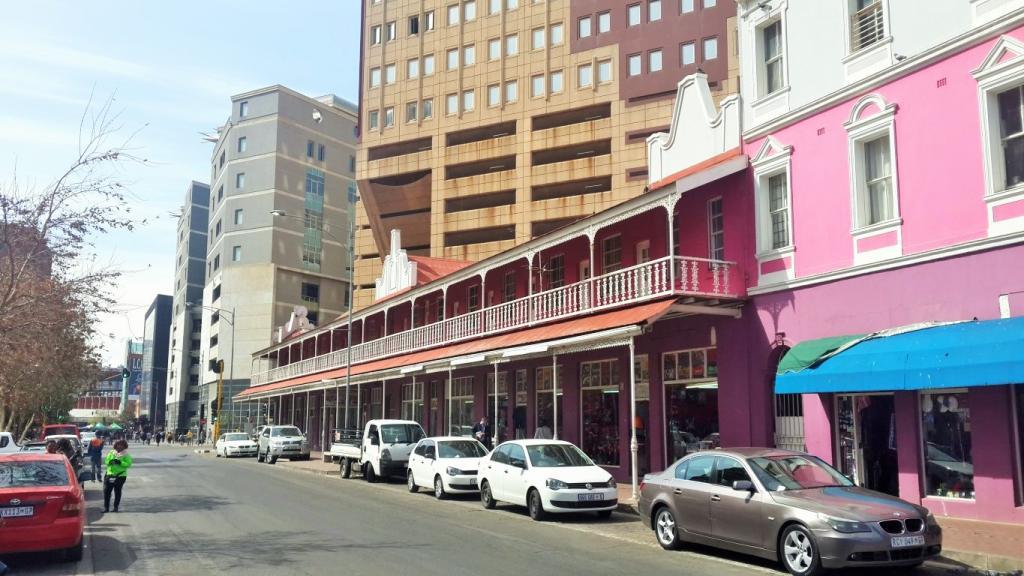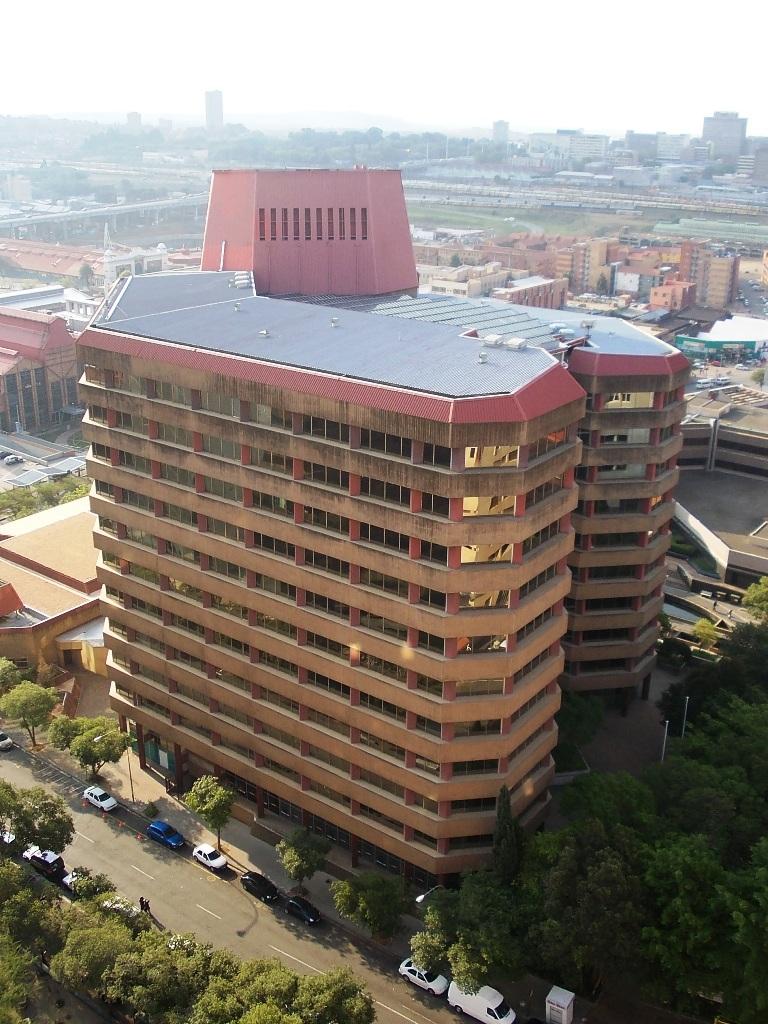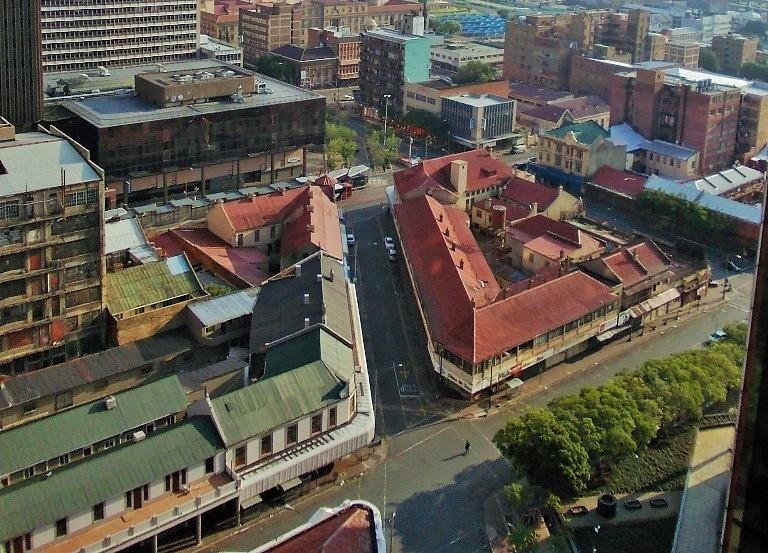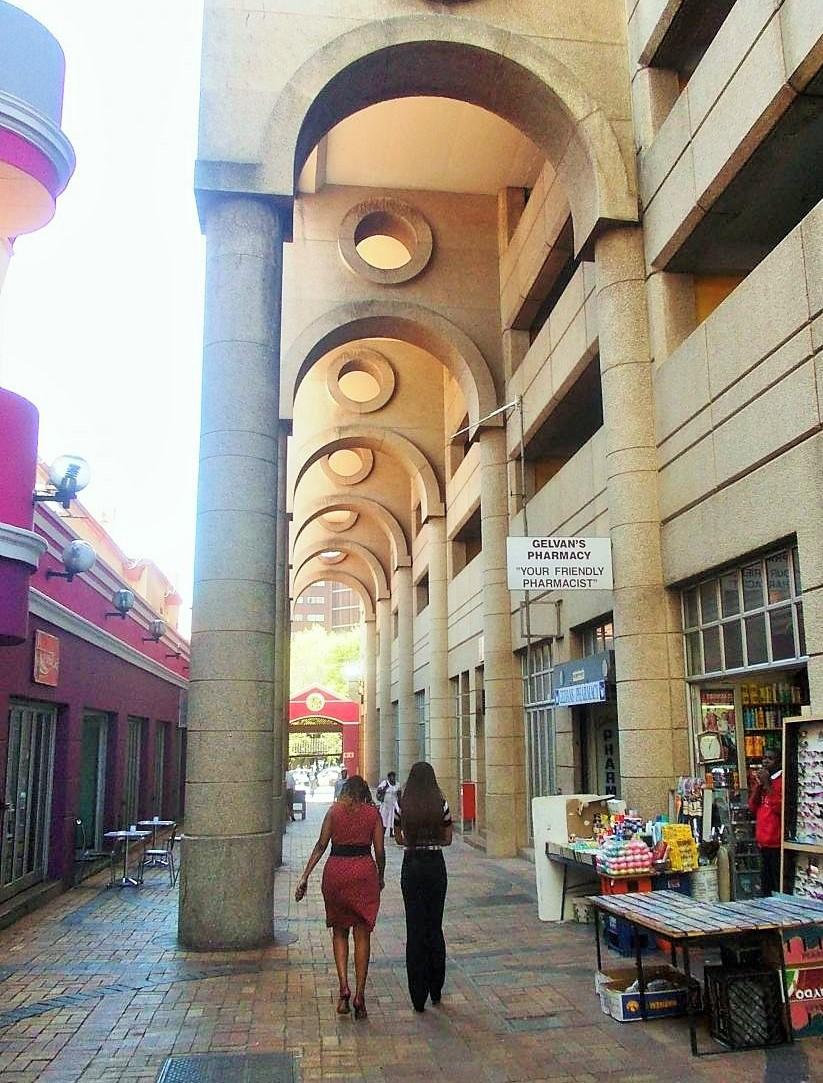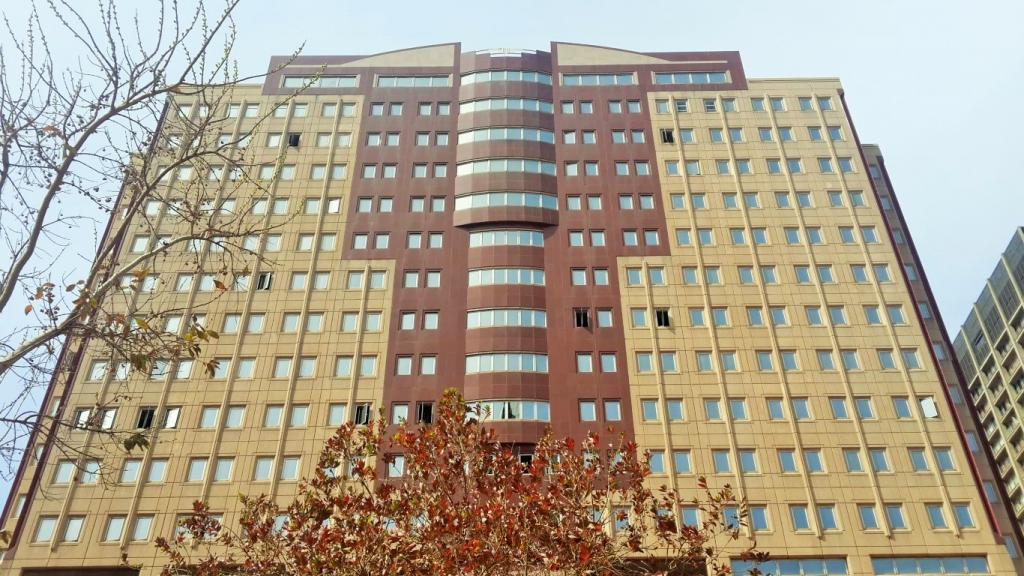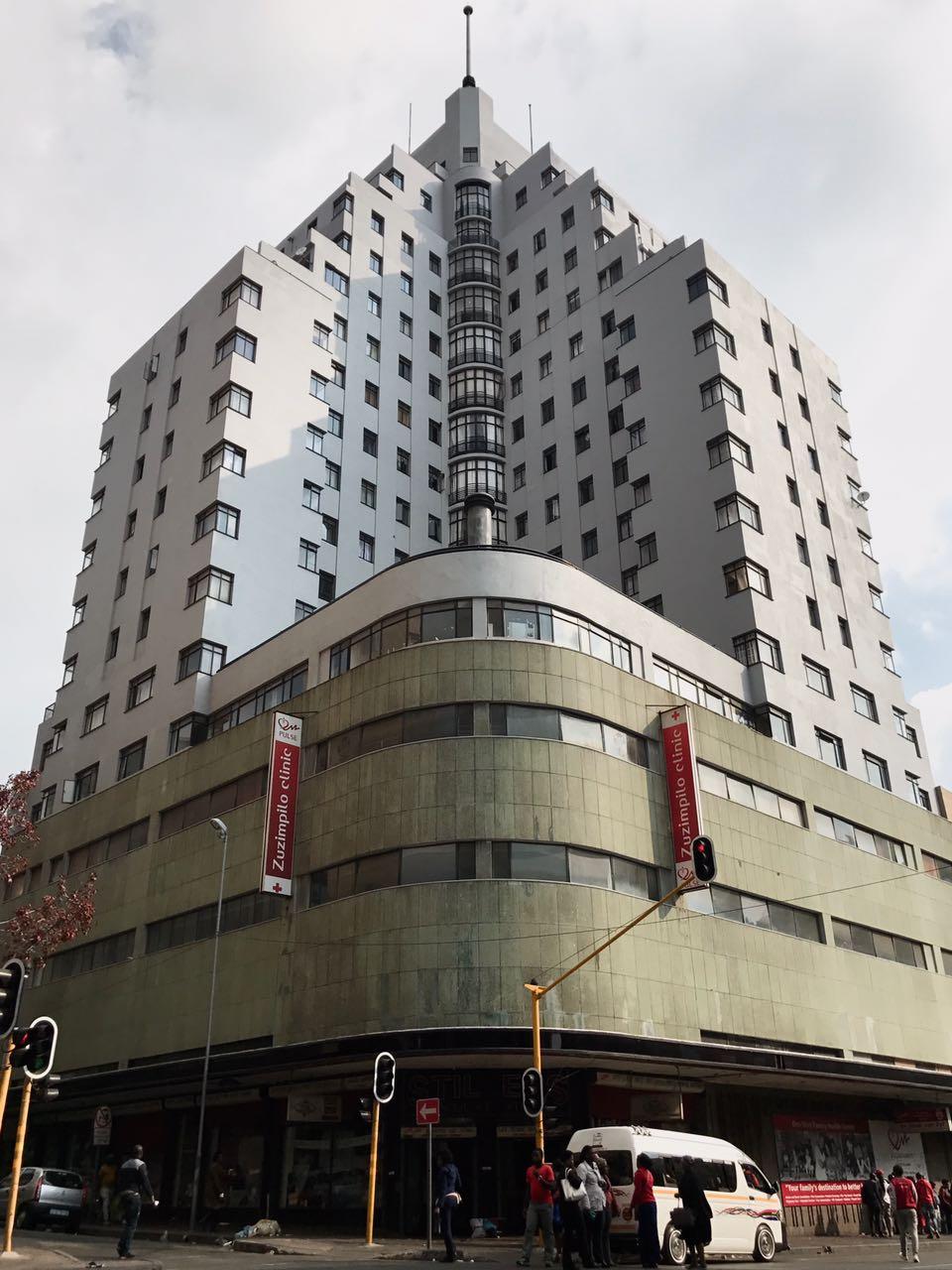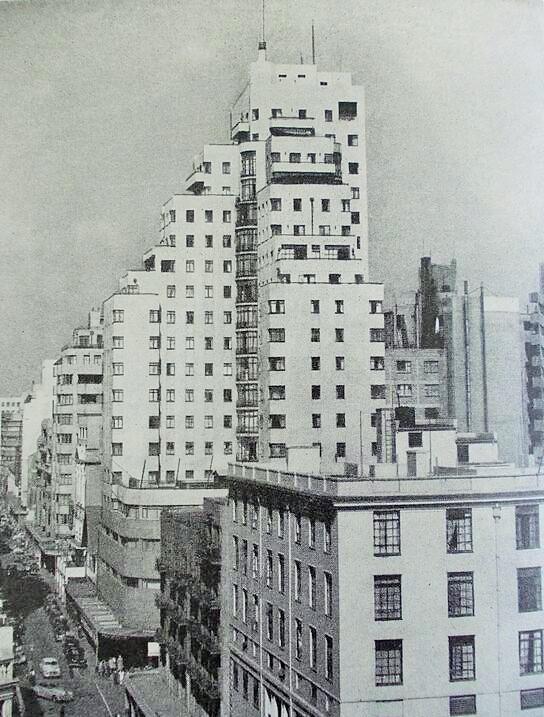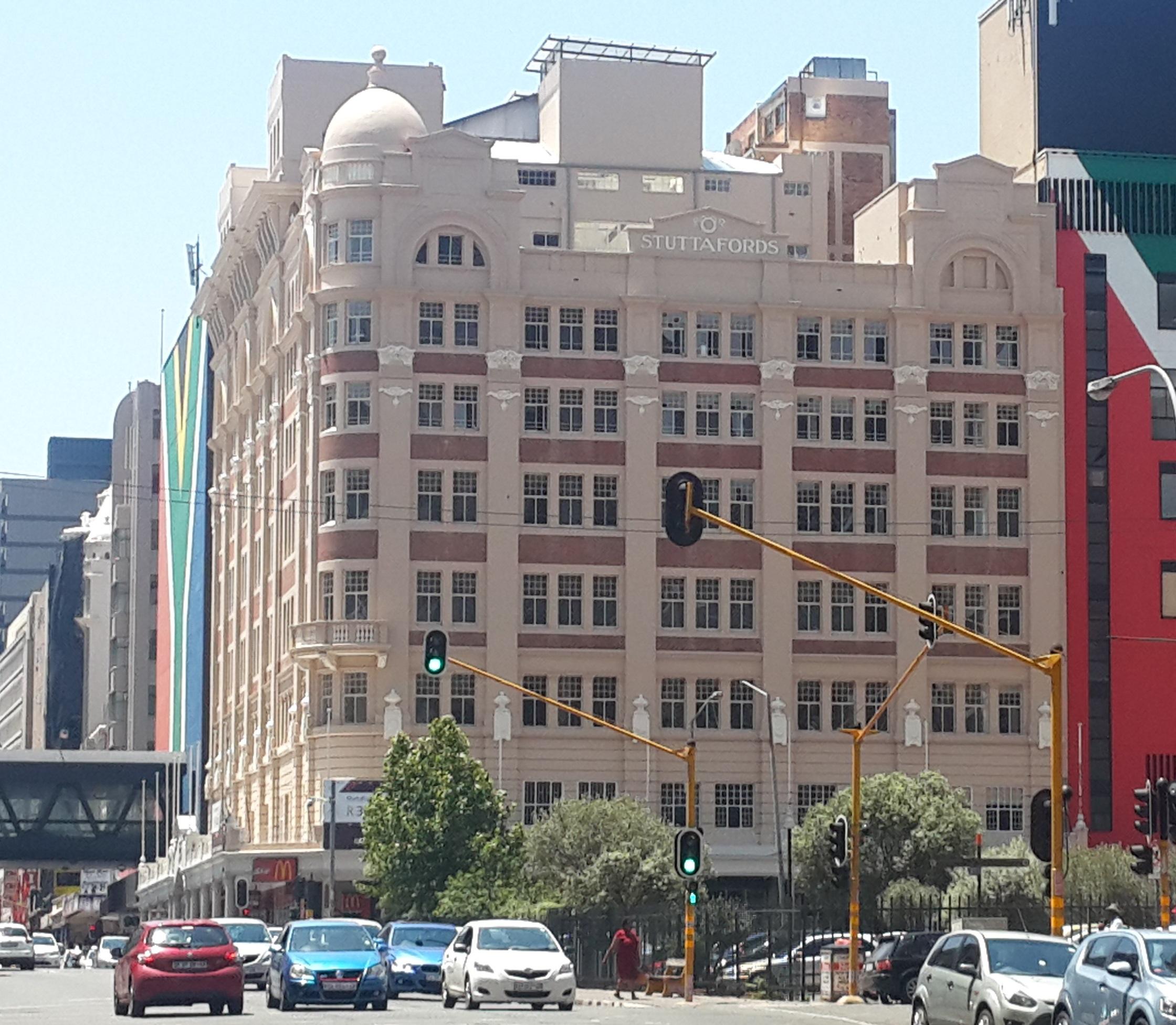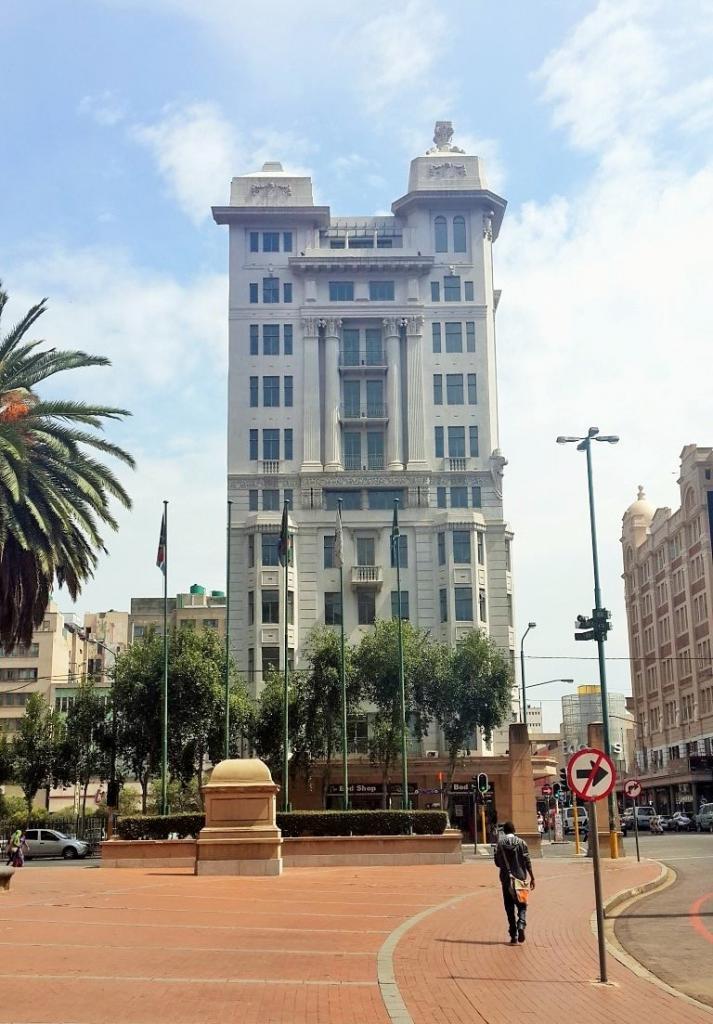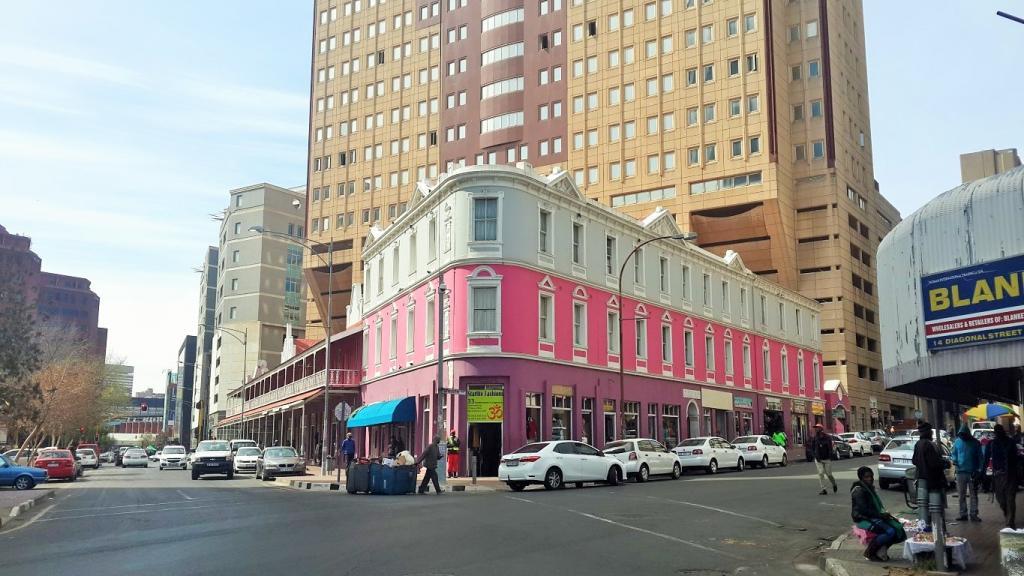
Disclaimer: Any views expressed by individuals and organisations are their own and do not in any way represent the views of The Heritage Portal. If you find any mistakes or historical inaccuracies, please contact the editor.
I was very sad to learn of the passing of the architect Robin Fee a few days ago and especially sorry that I had not expressed to him in his lifetime my thanks for his role in the conservation of Joburg’s heritage.
I would like to pay tribute to Robin Fee for two extraordinary instances where he put Johannesburg’s old buildings above any profit he or his firm could make if they had upheld their clients’ demands for demolition.
The first was the row of small shops in Diagonal Street which in 1988 The Star had sold to JCI. Robin was commissioned to develop skyscraper offices for Ernst and Young. Diagonal Street at that time was developing fast thanks to the re-location of the Stock Exchange to the north end. It seemed quite logical that all these tiny shops so quaint in which Indian shopkeepers had been plying their trade for more than 80 years with families living in rooms above the shops, should be replaced by huge office blocks. That was Joburg and the direction the city was taking and has always taken.
Nathanson's Building was almost lost (The Heritage Portal)
Old JSE building (The Heritage Portal)
Robin was prepared to cross the floor and join the conservationists and the local community in their outrage at the suggestion that Diagonal Street was outdated and due for Urban renewal. The rights pertaining to the properties were enormous and we were the sentimentalists who dared to suggest that Diagonal Street was a treasured part of the City’s history. He came forward with the idea of moving Fruit Alley over and cantilevering the new building high above what had been the highly successful fruit alley. Fortunately in the City Valuer’s records he had found a precise record of the size of each and every shop on fruit alley so these could be reconstructed while the shops fronting Diagonal Street would remain intact.
A portion of Diagonal Street from above (The Heritage Portal)
Fruit Alley / Gardees Arcade in 2014 (The Heritage Portal)
As long as JCI remained the owner and subsequently the Mines Pension Fund the shops and Fruit alley flourished. When Urban Ocean took over they raised the rentals so high they drove out the shop-keepers in fruit alley and then stopped maintaining the buildings. They continued raising the rents and yet the shopkeepers hung in there. They are still there today and Diagonal Street remains one of the jewels of the City. It could do with help but not from developers who lack any feeling for Joburg’s history. Ernst and Young were succeeded by the Franklin which hangs over the deserted fruit alley.
The Franklin (The Heritage Portal)
I encountered Robin some years later when Sanlam bought up the entire block around Anstey’s and huge pressure was brought to bear on the National Monuments Council for the demolition of every building so they could have a full block for development. We said goodbye to Anchor Mansions, Africa House... even the Anstey’s extension with its magnificent bank of six escalators. But not to Anstey’s. Once Again Robin told his Client “This far and no further. We cannot find a financially sustainable use for Anstey’s but we cannot support demolition.“ He advised them to give the building to the National Monuments Council. Instead the Preservation of Anstey’s Trust was set up to keep the building going.
Ansteys (Brian McKechnie)
Old image of Ansteys
So when we look at these two Joburg treasures today we have Robin Fee to thank for his willingness to sacrifice huge commissions in order to save Johannesburg’s heritage. He was involved in the restoration of other buildings in town such as Stuttafords and the Barbican, but I believe his finest legacy was saving Carmel (main image) and Nathanson’s Building in Diagonal Street, and later Anstey’s for Johannesburg.
Stuttafords (The Heritage Portal)
Barbican Building (The Heritage Portal)
Flo Bird is a well known South African heritage activist. She has fought to save Johannesburg's historic buildings for several decades. She is a founder member and former Chair of the Johannesburg Heritage Foundation.
An additional tribute from Clive Chipkin:
Agree or disagree with him, Robin Fee embodied much of the complexity that characterised architecture over 3 decades, 1960-1990. His capacity to resolve & help resolve some really enormous problems was special & his hand of friendship equally splendid. He has left a massive imprint on Johannesburg but the cynosure that seems to reflect his own words, certainly his attitude, that “ideas were owned collaboratively not singularly as part of team solutions to complex problem solving” shows the stature & sense of reality of Robin Fee Architect. The present crisis humanity is facing adds weight to this insight. With fellow feeling to his family.
Comments will load below. If for any reason none appear click here for some troubleshooting tips. If you would like to post a comment and need instructions click here.

